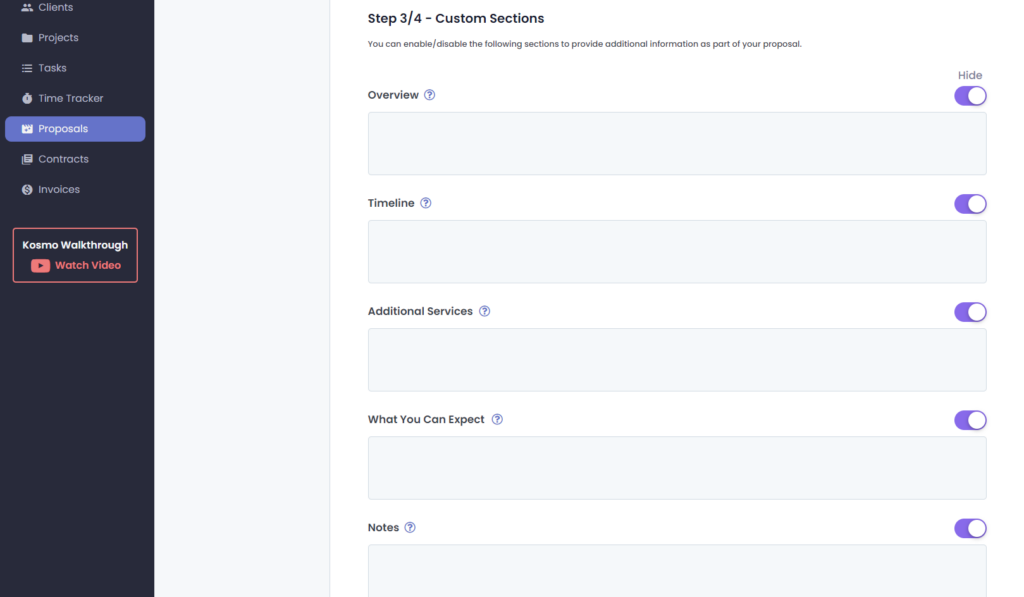Scope of Work – What Is It and Templates

You finally landed a client, and now they’re asking for a meeting to discuss the scope of work. If you’re new to freelancing or you’re not used to clients who are more formal when it comes to projects, then you might feel a little confused or overwhelmed.
But don’t worry, because creating a scope of work is pretty simple once you get the hang of it. What’s more, it will actually make your life easier, especially if your project with a client is pretty long or has a lot of parts. This document can clearly show your client what they can (and can’t) expect from you. Everything is already laid out so there will be no confusion in the future. It also helps you keep track of your task list.
Now, not all clients request this. You might be used to working with someone who simply asks you to do something and you do it. Easy as that! However, this might be the type of freelance work that is pretty quick or is just a one-time thing. Those who have a scope of work are pretty much heavier projects and may require a chunk of your time. However, these can be rewarding in terms of experience and even payments.
What is Scope of Work?

The scope of work is an agreement and also a guide for both the freelancer and the client. It shows important details like deliverables and schedules or timelines. This document outlines what you need to do and when you need to complete it. It helps with accountability for the freelancer and also to offer transparency for the clients.
Template for Scope of Project
Whether you call it the scope of services, projects, or works, this document varies depending on several factors. However, below are some of the main items that should always be included in a template for the scope:
Project Deliverables
You need to discuss with the client anything and everything you need to produce or provide for the project. For example, if you are a social media manager, you may need to provide the following deliverables:
- Weekly Social Media Posts (Images + Captions)
- Monthly Campaigns
- Facebook Ads
Think of project deliverables as all of the tasks that you need to do to show your client. These deliverables need to be fulfilled by the freelancer. But of course, before you start doing that, the scope of work is given to the client to be approved first. This way, you and your client can have a clear understanding of what you need to give and what they can expect to receive.
Timeline or Schedule
Once the deliverables are defined, you now have to create a schedule or timeline. This way, the client knows when to expect these deliverables to turn up. For example, if you create monthly campaigns, you may need to submit the April Campaign for approval by March.
For weekly social media posts, you may submit this quarterly or monthly, depending on your agreement with your client. Some may prefer to get social media postings on a weekly basis so that the content is “fresh.” Others may want it scheduled ahead of time just so there’s no need to scramble for new posts in the future.
The timeline must be followed by the freelancer. Of course, there may be times when schedules don’t go according to plan due to unforeseen circumstances. (If that’s the case, you may want to learn how to ask a client for extensions without irritating them).
Target Goals or Objectives

One of the things that a scope of work template needs to answer is the question, “Why?”. Whenever you create a project with a client, you ask them what their goals are. So, if you’re a social media manager, you ask the client, do they want new followers? Do they simply want exposure? Or, do they want to increase sales or bookings?
Now, the deliverables you create should be geared towards reaching these said goals. So, if you run a Facebook ad for the entirety of August, you should have a target goal of the ad reaching an x number of people or getting x number of clicks once the ad has run its course.
You have to define your deliverable and learn its purpose or objective. This gives your scope of services or works a measuring tool for success.

Reports
Finally, your scope of work template should have a place for reports. This can include your progress so that the client is aware of what you are currently doing. For example, you can report that you are mid-way into the completion of your monthly campaign.
You can also show the status of the Facebook ad that you are running for the month on a weekly basis, for the first week you received 10 inquiries, and then for the next week, you get 40. This can help the client decide if they want to pull the plug on the campaign or to be used as a reference for future ads they may run on Facebook.
Other Details to Include

If you ever look at a marketing agency’s scope of work example, you might find that the document contains more information than others. Freelancers can also do this depending on their branding as well as their clients’ requests. Below are some details you may want to include in your scope:
Fee
Some freelancers and clients prefer each deliverable to have the fee included. This is to make sure there are no surprises by the end of the project. Some may require a package fee but it does help to have the scope include the prices for your products and services so there is no confusion between you and your client.
Project Background
Although not a must, providing a project background can give the impression that you provide extra care and detail to your work. Some clients appreciate seeing a project background in the scope, so they know you understand what they want or what their company is all about. This is just a little extra if you want to impress your client, show how committed you are, or simply provide insight into your level of understanding of the project.
Logo
If you are trying to establish yourself as a serious freelancer or as a business, you might want to consider adding your logo to your scope of work. The right logo is part of your branding and should be used for any document for correspondence, for that matter, not just the scope.
Tips for Creating Scope of Service or Work Templates
Having a scope of work template is a very good idea as it can speed up the process whenever you get a new project or client. Making the first one might be the most difficult task as you are starting from scratch. But once you get new clients, you can easily update the template and you’ll definitely learn new things as you grow your freelancing business or progress in your freelancing journey.
Again, the saying is true that the first step is the hardest. Don’t worry because below are some tips to help you in making up your templates so you will have an easier time creating a scope of work documents in the future:
Make Space for Details
One of the most important things you can do when creating documents for your clients is to make them as detailed as possible. For example, if you are a web designer you have to indicate how many pages you can work on and how many revisions you can provide before you charge extra. This way, clients will know their limits and you will also protect your time and your efforts.
Get Input from Clients

As a freelancer, you have a vision of what you need to do for a client. However, a client may have a different point of view on what they want out of a freelancer’s services. When you create a template, you have to think of your target market or your audience, which is the client. Remember that at the end of it all, the scope of work must satisfy your client and this document should be your guide in providing the best products and services.
Use Visuals (When Possible)
You have to differentiate a scope of work from a contract or other documents that your clients will sign. Think of a scope of services as a presentation, you can add visuals so that your client can better understand what you can offer.
For example, if you are an analyst, you can make use of bar graphs and pie charts for showing your target goals. There are just some details that are easier to follow when drawn or as an image instead of something written.
Only Include What You Can Actually Do
As much as freelancers want to wow clients with target goals and objectives, it’s important never to overestimate what you can do. Scope of work is a promise, you have to reach your goals and provide what you have stated. So never write anything that you can’t do or if you aren’t 100% sure that you can achieve for your client. It’s better to underestimate and then surprise your client if you exceed as opposed to overpromising and not providing what you promised.
Use a Freelancer App
These days, freelancers have so many resources to help them navigate through time-tracking, contracts, invoices, proposals, and more. Kosmo is a freelancer software that can make writing up documents, like the scope of work, easier for you.

Just use the “Create a Proposal” tool on the app, and all you have to do is fill up the necessary information. It will already prompt you to include the necessary details, such as your and your client’s info, the deliverables, overview, timeline, what the client can expect, and more.
Conclusion
By now, you should have grasped the basics of writing scope of work. Even if it’s not required by all clients, it is a necessity for a freelancer to learn how to make one. Better yet, if you have a template ready to go if a client or a project ever needs one. It’s better to be prepared now than have to scramble for words and ideas to create a scope of work in the future.
Get Organized & Win More Clients
Kosmo has everything you need to run your freelancing business.